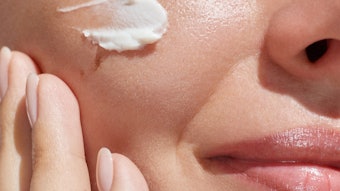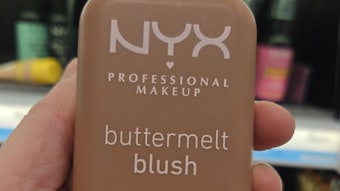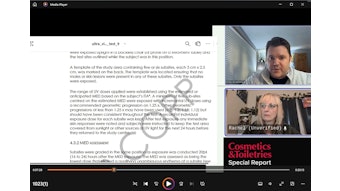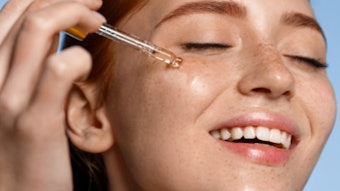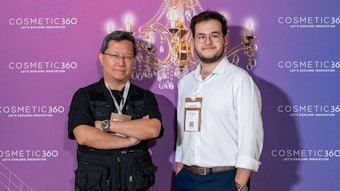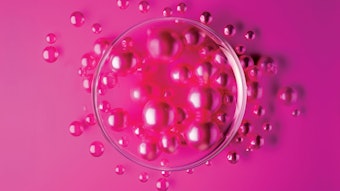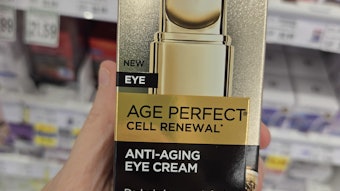*Adapted from T. Joseph Lin, PhD, Manufacturing Cosmetic Emulsions: Pragmatic Troubleshooting and Energy Conservation, Allured Business Media: Carol Stream, IL USA ch 16 (2010)
Log in to view the full article
*Adapted from T. Joseph Lin, PhD, Manufacturing Cosmetic Emulsions: Pragmatic Troubleshooting and Energy Conservation, Allured Business Media: Carol Stream, IL USA ch 16 (2010)
The quality of an emulsion, including its stability, is dependent not only upon the delicate balance of ingredients in the formulation, but also on process variables (pVs) that occur during manufacturing. For example, although sufficient mixing assures good stability in most emulsions, longer or more intense mixing does not necessarily produce a higher quality or more stable emulsion; in fact, many emulsions become unstable and deteriorate after intense mixing with a homogenizer.
Such degradation can be attributed to a breakdown in the yield value of the emulsion or unintended phase inversion caused by high shear. Therefore, understanding pVs can be valuable to prevent potential manufacturing issues. It can also assist formulators in selecting the most effective surfactant blend for a given purpose, which in turn can reduce the amount of surfactant required without affecting the emulsion quality or stability. This saves resources and can even improve product quality, as the present article describes.
Effects of pVs: Case Studies
As noted, understanding pVs can prevent potential product issues. For example, in previous work,1 the author investigated a manufacturing problem associated with a shear-sensitive thixotropic emulsion that manifested when the batch size was scaled up from 100 to 500 gallons. The source of the problem was increased shearing caused by the larger mixer in the larger kettle. In addition, the larger batch required a longer mixing and cooling time since batches are mixed as they cool. Further, the mixer in the larger kettle was of a fixed-speed type that could not be slowed.
To address these challenges, the author first suggested increasing the polymer thickener slightly in the formulation to compensate for the viscosity lost to high shearing in the larger kettle. However, since changing a formula can alter the finished product’s quality, the specific effects of pVs on the emulsions were investigated further in attempt to improve the formulas without changing them.2, 3 Specifically, the surfactant was added into the aqueous phase rather than the oil phase, which increased the viscosity and stability of the emulsion.2, 3 This work led to further research on low-energy emulsification (LEE) to shorten process times and increase batch sizes while reducing energy production costs.4
In another example,5 the author sought to prevent the degradation of a very fine emulsion produced using a phase inversion temperature (PIT) technique. In this case, a slow batch cooling rate, again attributable to the large size of the batch, was chiefly responsible for the coalescence of emulsion droplets. Therefore, a heat exchanger was used to facilitate rapid cooling during the critical stage of emulsification. Later, the author also discovered that an LEE procedure could be used rather than a heat exchanger to produce rapid cooling; i.e., the cold α phase was simply added when the batch temperature was near the PIT.
In a final production scenario, excess thermal energy input had once again slowed the cooling process and degraded the emulsion quality during the critical emulsification step. This effect was not observed by the formulation chemist in the laboratory because small batches produced in beakers cool quickly. Scaling the batch up to a larger size in a factory however slowed the cooling rate—even when cooled with circulating water in the kettle jacket. Once experiments revealed the mechanism of degradation, the manufacturing process could be re-engineered and in this case, the simplest and cheapest solution was reducing the energy input and accelerating the cooling rate at the critical stage through LEE processing.
Surfactant Use
Besides understanding pVs to prevent manufacturing issues, this approach can be used to select the most effective surfactant blend for a given purpose, in turn reducing the amount required. While various functional ingredients including surfactants are required for emulsification and to maintain product stability, oftentimes the industry uses more than necessary—and since emulsion stability can be difficult to predict, the natural tendency is to use more to ensure that products remain stable. In fact, this author has observed cases where instability was in part caused by too much or the wrong surfactant.
Thus, examining the specific pVs involved during emulsification in turn lowers product costs, minimizes the carbon footprint, and can improve the formulas themselves. For example, although surfactants are indispensable to preparing emulsions, some have been known to cause undesirable skin reactions and eye irritation, or to increase the penetration of irritants and impurities.6 In products such as waterproof sunscreens, too much surfactant can reduce the product’s water-resistance or increase the drying time and stickiness of the product. Also, many nonionic surfactants are known to deactivate preservatives.7
Clearly, incorporating the wrong surfactant or too much of a surfactant is undesirable from the standpoint of production costs and product quality. However, optimization of surfactants is not easy because it requires a good understanding of the basic mechanisms involved, including the role of surfactants in emulsification as well as their interaction with other variables.
The best-known system for predicting optimum surfactant blends for emulsification is the hydrophile/lipophile balance (HLB) proposed by Griffin.8, 9 This system works well when the oil phase consists mainly of hydrocarbons and when the surfactants used are restricted to certain ethoxylated nonionics. Modern cosmetic formulations, however, have become much more complex and incorporate new natural oils, surfactants and preservatives; HLB numbers for these new materials unfortunately are seldom available and are oftentimes inaccurate, partly due to difficulties in obtaining reliable data.
Another problem is that many oils and waxes used in cosmetic products are also somewhat surface active and can be considered surfactants. For instance, lanolin is an oil but can function as a low-HLB emulsifier. Similarly, fatty alcohols and fatty acids are also surface active and can be considered either as oils or surfactants. Lin, Kurihara and Ohta therefore calculated the HLB requirements for an oil mixture consisting of mineral oil and cetyl alcohol in two ways: considering the cetyl alcohol first as an oil, then as a surfactant—to determine if consistent results could be obtained. Unfortunately, they were not, and it therefore appeared that an internal inconsistency was present in the system that prevented its ability to predict optimum surfactant blends when polar oils or waxes were present in a formulation.
Surfactant Location
The same researchers also conducted a series of experiments10, 11 that involved altering the initial location of the surfactant to further examine the basic mechanisms of emulsification and the inconsistencies observed. They placed the surfactant in the oil phase as well as the aqueous phase, and by conducting a large number of studies, could conclude that when water is solubilized in the oil phase containing surfactants, phase inversion and the formation of multiple emulsions were mainly responsible for the observed differences. The two distinct mechanisms at work, referred to as Mechanisms A and B, were based on the initial location of the surfactants in the formulation.
Mechanism A involves the formation of an inverted primary emulsion—when an o/w emulsion is prepared by initially placing the surfactant in the oil phase. As illustrated in Figure 1, some of the water is solubilized by the surfactant in the oil and a w/o primary emulsion is formed (see Step 1). With mixing, the w/o emulsion begins to fragment (see Step 2) and a w/o/w double type emulsion is formed (see Step 3). Since the formulation was created to produce an o/w final emulsion, the double emulsion will start to fragment after continued mixing to become an o/w emulsion. However, frequently the double emulsion may be stable and the final emulsion can contain a substantial portion of double emulsion droplets, similar to those shown in Figure 2.
Mechanism B occurs when all the surfactant is initially placed in the water phase, as shown in Figure 3. In this case, Mechanism A is inoperative because there is no initial solubilization of water in the oil phase and no w/o primary emulsion is formed. After the oil is dispersed into the water phase (see Step 1), a coarse emulsion is formed (see Step 2). With continued mixing, the emulsion droplets are further reduced in size as shown in Step 3. By not phase-inverting, the emulsion produced is generally much coarser than the same formulation made via Mechanism A. Figure 4 shows a microphotograph of an emulsion prepared using Mechanism B without the phase inversion process. The researchers thus investigated Mechanism A further in attempt to optimize both the composition variables (cVs) and the pVs.
Solubilization to Predict the Optimum Surfactant Blend
The described investigation into the effects of solubilization and phase inversion led to a finding that the maximum amount of water possibly solubilized by an oil phase containing surfactants could be used as a guide to determine the point of maximum emulsification efficiency.11, 12 Figure 5, for example, shows the determination of an optimum surfactant blend of two nonionic surfactants. One surfactant, oleth-2, is more a lipophilic and has a lower HLB while the other, oleth-7, is a more hydrophilic surfactant with a higher HLB.
In this example, the formulation contains 65% deionized water and 30% mineral oil, and a total of 5% w/w of the mixtures of the two nonionic surfactants was used. The number on the abscissa represents the weight fraction of the more hydrophilic surfactants in the binary surfactant blend. As can be seen in Figure 5, the peak of the solubilization curve or maximum solubilization point, indicated by a black star, corresponds to the point at which the emulsions produced the smallest droplet size; the minimum mean droplet diameter is indicated by a white star.
This most efficient point of o/w emulsification corresponded to a surfactant blend of 60% oleth-7 and 40% oleth-2 within the blend. Thus, by conducting similar solubilization experiments, one can select the most effective surfactant blend for an o/w formulation. The authors tested this concept for many o/w cosmetic emulsions prepared using many different surfactants and found the correlation to work well (data not shown). While this solubilization method is quite simple to perform, it should be noted that it is only applicable for predicting o/w emulsion types. However, since more than 90% of cosmetic emulsions are of this type, it is a useful tool.
This technique is similar to Griffin’s HLB method but has some important differences. One is that, since the effects of pVs are carefully controlled in solubilization experiments, the data is more reproducible and reliable. In addition, since emulsion droplet size rather than emulsion stability is used to indicate emulsion quality, the formulator need not wait for the emulsion to become unstable to determine its stability, thus requiring less time. The data shown in Figure 6 demonstrates the ability of this method to accurately predict the shift in optimum emulsification peak while the HLB method failed to predict this shift.
It is known that a polar oil like lauryl alcohol generally has a higher required HLB value than a nonpolar oil like mineral oil. The experiment shown here was designed to determine the effect of adding lauryl alcohol to a mineral oil to determine if the solubilization method and the original HLB method could accurately predict the shift in optimum emulsification points. The dotted lines in the graph represent the solubilization data and droplet size data when pure mineral oil (30%) is used as the oil phase. The solid lines represent the data taken when the 30% oil phase consisted of 6% lauryl alcohol and 24% mineral oil.
The emulsions contained 65% deionized water and 5% nonionic surfactant mixture, consisting of different ratios of a hydrophilic, i.e. polysorbate 20, and a lipophilic, i.e. sorbitan laurate, surfactant. The ratio of polysorbate 20 to sorbitan laurate for each emulsion is indicated on the abscissa and the HLB values of the surfactant mixtures are also indicated as a reference. The solubilization limit data shown in Figure 6 indicates that by adding a polar oil, i.e. lauryl alcohol, to mineral oil, both the solubilization peak indicated by a black star and the droplet size minimum indicated by a white star shifted to the right of the graph. The amount of shift was nearly identical, suggesting an excellent correlation of the solubilization limit and the optimum emulsification point, represented by the minimum emulsion droplet size.
In terms of HLB values, the shift was from approximately 11.7 for pure mineral oil, to 14.3 for the mixture as determined by the solubilization method. If one were to use the published required HLB value of 10 for mineral oil and 14 for lauryl alcohol to calculate the shift in optimum emulsification point, as predicted by Griffin’s method, the result would be quite different.11 For the 80/20 mixture of mineral oil/lauryl alcohol, the calculated required HLB value was 10.8, using the linear additive rule, which is no more than one HLB unit shift for the mixture. This is significantly less than the 2.6 unit shift observed in the described emulsification experiments.
Conclusions
The main purpose of investigating solubilization was to develop a better tool to predict optimum emulsification efficiency. In addition, the knowledge gained by studying pVs assists in designing more efficient manufacturing procedures and improving emulsion quality without changing the formulation. With a better understanding of the workings of Mechanism A, formulators may also use this tool to save energy.13
Further experiments conducted (data not shown) support the idea that whenever a variable—i.e. composition or process—is introduced that interferes with the functioning of Mechanism A, degradation of the emulsion quality is observed. On the other hand, when a cV or pV is adjusted to improve the functioning of the emulsification mechanism, the emulsion quality improves correspondingly.13 Therefore, the author concludes that in situations where Mechanism A is mainly responsible for forming an emulsion, it is important to control not only the type of surfactant used, but also the amount employed. Furthermore, controlling the pVs is also crucial to ensure the effective functioning of the emulsification mechanism.
Manufacturing procedures should be carefully designed to take into account and control all key variables. However, by optimizing both the formulation as well as the process conditions to favor the operation of emulsification mechanisms, product developers can not only reduce energy consumption, but also the amount of surfactants used and potentially other stabilizers to cut manufacturing costs and improve product quality.13
References
- TJ Lin, Manufacturing Cosmetic Emulsions: Pragmatic Troubleshooting and Energy Conservation, Allured Business Media: Carol Stream, IL USA ch 16 (2010)
- TJ Lin, Effect of Initial Surfactant Location on the Viscosity of Emulsions, J Soc Cosm Chem 19 683–697 (Sept 1968)
- TJ Lin and JC Lambrechts, Effect of Initial Surfactant Location on Emulsion Phase Inversion, J Soc Cosm Chem 20 185–98 (March 1969)
- TJ Lin, Low-Energy Emulsification—Part I: Principles and Applications, J Soc Cosm Chem 29 117–25 (March 1978)
- Ibid Ref 1, ch 7
- TJ Lin, Adverse Effects of Excess Surfactants upon Emulsification, C&T 106 71–81 (May 1991)
- TE Haag and DF Loncrini, “Esters of Para-Hydroxybenzoic Acid,” In JJ Kabara, ed, Cosmetic and Drug Preservation, Principles and Practice Marcel Dekker, Inc. New York (1984)
- WC Griffin, Classification of Surface Active Agents by “HLB,” J Soc Cosm Chem 1 311–26 (1949)
- WC Griffin, Calculation of HLB Values of Non-Ionic Surfactants, J Soc Cosm Chem 5 249–56 (1954)
- TJ Lin, H Kurihara and H Ohta, Effects of Phase Inversion and Surfactant Location on the Formation of O/W Emulsions, J Soc Cosm Chem 26 121–39 (March 1975)
- TJ Lin, H Kurihara and H Ohta, Prediction of Optimum O/W Emulsion Via Solubilization Measurements, J Soc Cosm Chem 28 457–79 (Aug 1977)
- WR Markland, Aqueous Solubilization and Phase Inversion in O/W Emulsification, Norda Briefs, Norda Inc. 480 (April–May 1977)
- TJ Lin, Low-Surfactant Emulsification, J Soc Cosm Chem 30 167–80 (May1979)
